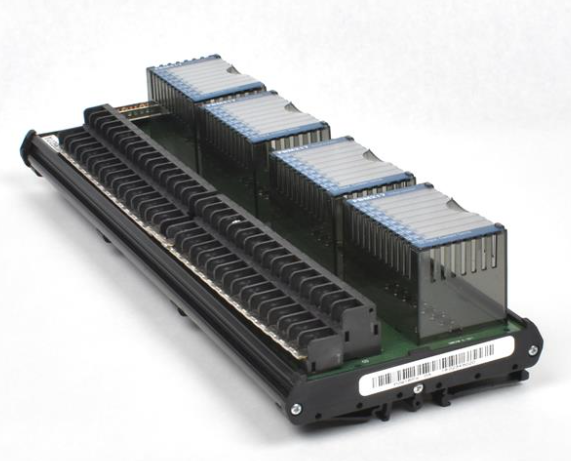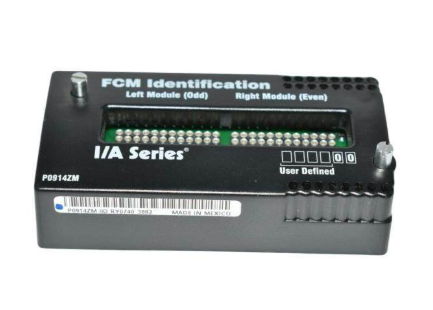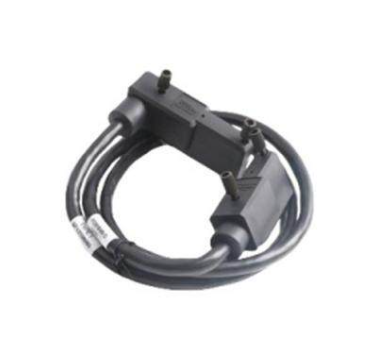Why the slow progress in power generation?
A column of water more than a meter high gushed from a crevasses in the mountains, smelling of sulfur. Then, the hot water flows down the pipe to the hot spring pool, waiting for the visitors.
This is Tengchong Hot Sea Scenic Area in Yunnan Province, one of the regions with the most abundant medium and high temperature geothermal resources in China, and also a popular tourist place for hot spring viewing and bathing.
Hot spring bathing, ground source heat pump, geothermal heating is the most direct way to use geothermal energy in China, and the annual utilization rate has ranked first in the world for many years.
As another important form of geothermal utilization, geothermal power generation has been developed on a small scale in China.
According to Deng Zhuang, executive president of Nanjing Tianjia Energy Technology Co., LTD., by the end of 2022, China's installed geothermal power generation capacity was 53.45 megawatts, accounting for only 0.33% of the world's installed geothermal power generation capacity. Last year, the world installed about 161,300 megawatts of geothermal power, with the United States, Indonesia, the Philippines, Turkey and New Zealand in the top five.
Under the background of "double carbon", China's wind power and photovoltaic power generation are surging forward, and why is geothermal power generation, which is also a green renewable energy, faltering? Under the new situation, what efforts need to be made to achieve rapid development of geothermal power generation?
From July 24 to 29, Jiemian News and other media visited Xiongan, Xi 'an, Dali and Tengchong and conducted local investigations on the current situation of geothermal development in China, and found that the domestic geothermal heating industry is relatively mature, and geothermal power generation is still in the early stage of cultivation. The lack of effective electricity price subsidy policy, the difficulty of obtaining mining rights and the unclear resources are the main reasons restricting the development of geothermal power generation.

In the future, the stepwise utilization of geothermal power generation, supplemented by geothermal heating, ecological agriculture, cultural tourism and health care will become a new model for the development and utilization of geothermal resources.
Geothermal heating project of Sinopec Luyuan Geothermal Energy (Shaanxi) Development Co., Ltd. located in Xianyang City. Photo: Hou Ruining Sinopec Luyuan Geothermal Energy (Shaanxi) Development Co., Ltd. located in Xianyang city geothermal heating project. Photograph: Hou Ruining
It dropped from 8th to 19th place
Geothermal resources refer to the energy inside the earth that can be economically utilized by human beings, including direct utilization and power generation.
According to the buried depth and temperature of geothermal energy, geothermal energy can be divided into shallow geothermal energy, hydrothermal geothermal energy and dry hot rock. Shallow geothermal resources and medium and low warm water geothermal resources are mainly used directly, while high temperature hydrothermal geothermal resources and dry hot rocks are mainly used for power generation.
High temperature geothermal resources exist in the form of steam when the temperature is higher than 150℃. The medium temperature geothermal resources are about 90℃-150℃, and exist in the form of a mixture of water and steam. The temperature of low-temperature geothermal resources is between 25℃ and 90℃, and it exists in the form of warm water, warm water and hot water.
China is rich in geothermal resources. The annual recoverable resources of shallow geothermal energy in 336 cities at or above the prefecture level are equivalent to 700 million tons of standard coal. The annual recoverable resources of hydrothermal geothermal energy in China are equivalent to 1.865 billion tons of standard coal. The 3-10 km dry hot rock resource is equivalent to 860 trillion tons of standard coal.
China has a huge potential for geothermal power generation. The geothermal power generation potential of high-temperature geothermal resources distributed in southern Tibet, western Sichuan and western Yunnan is 7,120 MW, accounting for 84.1% of the country's high-temperature geothermal resources. The power generation potential of high-temperature geothermal resources in the southeast coastal area is 700 megawatts, accounting for 8.27% of the country.
Compared with wind power and photovoltaic, geothermal power generation is not only zero emissions, no pollution, and good stability, can provide uninterrupted power supply, the average annual operation time of more than 8,000 hours, the annual utilization rate is 5-8 times that of solar and wind power.
But China's installed geothermal power capacity is small.
Liu Jinxia, chief expert of Sinopec Nova Company, said that as of 2020, there are six geothermal power stations in operation in China, respectively, two geothermal power stations in Tibet, Yangbajing and Yangyijing, with an installed capacity of 26.18 MW and 16 MW respectively. Sichuan Kangding geothermal power station installed capacity of 0.28 MW; Yunnan Ruili geothermal power station installed capacity of 1.6 MW; Fengshun Dengwu geothermal Power Station in Guangdong, with an installed capacity of 0.3 MW; Hebei Xianxian geothermal power station, installed capacity of 0.2 MW.
From the indicator of installed capacity of geothermal power generation, China has dropped from the eighth place in the world in the late 1970s to the 19th place at present.
China had high hopes for geothermal power. In 2013, the National Energy Administration's "Guiding Opinions on Promoting the Development and utilization of geothermal energy" proposed that the installed geothermal power generation capacity would reach 100 megawatts by 2015. In 2017, the "13th Five-Year Plan for Geothermal Energy Development and Utilization" of the National Development and Reform Commission proposed that the installed capacity of geothermal power generation would be increased by about 530 MW.
In 2021, the state will no longer mention specific targets for the development and utilization of geothermal resources. This year, the National Energy Administration "Several opinions on Promoting the development and utilization of geothermal energy", proposed "the construction of a number of geothermal power generation demonstration projects in areas with good resource conditions". Last year, the National Development and Reform Commission issued the "14th Five-Year Plan for renewable Energy Development" proposed: "orderly promote the development of geothermal power generation."
At the same time, wind power and photovoltaic power generation have shown rapid growth in the past two years. Last year, China's new installed capacity of wind power and photovoltaic power generation reached 125 million kilowatts, exceeding 100 million kilowatts for three consecutive years. The total installed capacity of wind power is 365 million kilowatts, and that of solar power is 393 million kilowatts.

Subsidies are key
Geothermal electricity price subsidy is not in place, which is the key to restrict its development.
At the press briefing of the "Media into China Geothermal" Dali activity held on July 27, He Jishan, academician of the Chinese Academy of Engineering, said that domestic geothermal power generation is in the cultivation stage and needs support from the state and the government, especially electricity price subsidies.
"There are some planned geothermal power projects in Yunnan, and once there is a reasonable electricity price subsidy, government guidance and enterprise participation, it will be able to scale up quickly and become an industry." He Jishan said.
Deng Zhuang introduced that the domestic geothermal electricity price subsidy is a station and a discussion, there is no national unified subsidy policy, the new geothermal power station can not get subsidies, and the loss of geothermal power stations has led to the construction of new geothermal power stations.
Wang Shanmin, president of the Tibet Geothermal Industry Association, has participated in the construction of Yangba Well and Yangyi Well in Tibet. According to him, the Yangbajing geothermal power generation project includes tax on-grid electricity price of 0.9 yuan/degree, and includes the national renewable energy electricity price additional allocation, the current economic benefits are good; Yangyi geothermal power station has not been subsidized electricity prices, grid settlement price of 0.25 yuan/degree, serious losses.
Experts at the conference generally said that the operating costs of geothermal power generation are very low, but the upfront investment costs are high. If geothermal power generation wants to be profitable, the on-grid subsidy price is recommended at 0.65-0.85 yuan/degree.
"In the early stage of geothermal power generation, it is necessary to adopt similar electricity price subsidies for wind power and photovoltaic. Costs are likely to come down when they scale up." Wang Shanmin believes that the installed scale of domestic geothermal power generation must reach at least 200 megawatts in order to achieve scale, and can be equal to the benchmark price of coal-fired thermal power and achieve parity Internet access.
Iceland is one of the representative countries for the large-scale use of geothermal power. According to Zhang Dawei, director of the Institute of Urban Underground Space and Energy of the Chinese University of Hong Kong (Shenzhen) and the Institute of Geothermal Energy Science and Technology (Dali), the current cost of geothermal power generation in Iceland is equivalent to about 0.2 yuan/degree.
Secondly, it is difficult to obtain mining rights license. Wang Shanmin introduced that the Yangyi power plant, which has been connected to the grid for power generation in 2018, has completed the disposal of mining rights, but has not obtained geothermal mining rights so far.
Geothermal mineral resource taxes and water resources fees have also made the difficult operation of geothermal power plants worse.
In 2020, the Resource Tax Law lists geothermal as an energy mineral, requiring a tax rate of 1%-20% of raw ore or 1-30 yuan per cubic meter. This means that a geothermal resource with an annual geothermal fluid circulation of 5.47 million cubic meters such as the Yangyi power plant needs to pay a resource tax of at least 5.47 million yuan.
The mismatch between resources and consumption areas also hinders the development of geothermal power generation. In China, the medium and high temperature geothermal energy that can be used for power generation is mostly distributed in the southwest of southern Tibet, western Yunnan, western Sichuan, etc., and the power consumption is mainly in the eastern coast, and the distribution of geothermal resources does not match the demand for electricity consumption, which makes the construction, operation and power transmission costs of geothermal power stations remain high.
Zhang Dawei believes that in order to achieve the large-scale development of geothermal power generation, we need to start from four aspects.
First, we will comprehensively deepen exploration of geothermal energy resources. Geological survey and potential evaluation of geothermal energy; Optimize favorable target areas and exploration targets for geothermal energy; The establishment of geothermal energy exploration and development pilot areas.
Second, we will strengthen research on geothermal energy theory, key technologies and equipment. For example, strengthen the research on the composition of medium and deep geothermal heat sources and the heat control mechanism of new structures, and the efficient power generation technology of medium and low temperature geothermal energy.
Third, we will carry out demonstration projects for the development and utilization of geothermal energy. Efforts will be made to build Dali into a carbon neutral demonstration zone in western Yunnan, a national "multi-energy complementary" demonstration base, and a "Yunnan Dali National Demonstration zone for high-quality development of thermal energy".

Fourth, we will introduce supporting policies to encourage the development and utilization of geothermal energy. The government has increased investment, encouraged private investment, introduced comprehensive electricity prices for geothermal energy power generation projects, and reduced and exempted geothermal energy resource taxes and royalties for exploration and mining rights.
New mode of cascade utilization
As a region rich in geothermal resources, Dali has begun to explore a new model and become a pilot city for a new round of geothermal power generation and cascade utilization.
Geothermal cascade utilization refers to the step-by-step utilization of geothermal energy according to different temperatures. Under normal circumstances, high temperature geothermal energy will be used for power generation, medium and low temperature geothermal energy is used for heating, bathing, breeding and so on.
The hot spring in Xiashidong Village, Midu County, Dali, is currently mainly used for villagers' domestic water. Photo: Hot spring in Xiashidong Village, Dali Midu County, Houruining, is currently mainly used for villagers' domestic water. Photograph: Hou Ruining
Qu Jian, head of Dali Spring Muyuan Agricultural Technology Company, is looking forward to geothermal cascade utilization and development. According to him, the company's greenhouse consumes about 10 billion cubic meters of natural gas every year, and the energy consumption cost exceeds 5 million yuan, accounting for 30% of the total cost.
"By replacing natural gas with geothermal energy, companies can reduce their energy costs by a third." Qu Jian said.
At the "Media into China geothermal" news briefing, Dali Executive Vice Governor Li Su said that in the "Dali Industry revitalization three-year Action Plan (2022-2024)" clearly listed geothermal energy as one of the key development of new energy industries.
2022 is the pilot exploration period of Dali geothermal resources, 2023-2025 is the period of industrial cultivation and development, 2026-2030 is the period of industrial development and growth, explore the exploration and development and comprehensive utilization of geothermal energy model, and build Dali national geothermal energy high-quality development demonstration zone.
Peng Jianhua, director of Dali Energy Bureau, said that Dali through the geothermal resource exploration of two pilot counties in Midu and Erhai, the preliminary optimal block is predicted to develop 20-40 MW installed geothermal power generation projects.
The Midu River drainage area, as the first pilot, is a cascade comprehensive utilization development based on 20 MW installed power generation, with an investment of about 1 billion yuan. Among them, 600 million yuan is power generation projects, and 400 million yuan is invested in comprehensive utilization projects.
At present, the implementation plan of Dali geothermal development has been studied and released by the General meeting of Dali People's Government, and the work of setting exploration rights and attracting investment is being carried out.
The relevant leaders of Dali State said that the economy of the single geothermal power generation project depends on the clarity of the national electricity price policy. If the state introduces a power price support policy, it will greatly encourage the smooth progress of pilot projects.
In addition to supporting the preliminary resources exploration funds, Dali Prefecture will also provide support for geothermal research funds. The next step will be to study the tax exemption policy.
Dali is one of the main positions of renewable energy power generation in Yunnan Province.
In 2022, Dali's newly put into operation of solar photovoltaic power plant installed capacity ranks first in Yunnan Province, has built 3.46 million kilowatts of new energy installed capacity, accounting for 22% of the province's new energy installed capacity.
Li Su said that during the "14th Five-Year Plan" period, Dali's new energy installed capacity will increase by more than 10 million kilowatts, and it is taking the lead in building the first "10 million kilowatt level" new energy base in the province.
- EMERSON
- Honeywell
- CTI
- Rolls-Royce
- General Electric
- Woodward
- Yaskawa
- xYCOM
- Motorola
- Siemens
- Rockwell
- ABB
- B&R
- HIMA
- Construction site
- electricity
- Automobile market
- PLC
- DCS
- Motor drivers
- VSD
- Implications
- cement
- CO2
- CEM
- methane
- Artificial intelligence
- Titanic
- Solar energy
- Hydrogen fuel cell
- Hydrogen and fuel cells
- Hydrogen and oxygen fuel cells
- tyre
- Chemical fiber
- dynamo
- corpuscle
- Pulp and paper
- printing
- fossil
- FANUC
- Food and beverage
- Life science
- Sewage treatment
- Personal care
- electricity
- boats
- infrastructure
- Automobile industry
- metallurgy
- Nuclear power generation
- Geothermal power generation
- Water and wastewater
- Infrastructure construction
- Mine hazard
- steel
- papermaking
- Natural gas industry
- Infrastructure construction
- Power and energy
- Rubber and plastic
- Renewable energy
- pharmacy
- mining
- Plastic industry
- Schneider
- Kongsberg
- NI
- Wind energy
- International petroleum
- International new energy network
- gas
- WATLOW
- ProSoft
- SEW
- wind
- ADVANCED
- Reliance
- YOKOGAWA
- TRICONEX
- FOXBORO
- METSO
- MAN
- Advantest
- ADVANCED
- ALSTOM
- Control Wave
- AB
- AMAT
- STUDER
- KONGSBERG
- MOTOROLA
- DANAHER MOTION
- Bently
- Galil
- EATON
- MOLEX
- Triconex
- DEIF
- B&W
- ZYGO
- Aerotech
- DANFOSS
- KOLLMORGEN
- Beijer
- Endress+Hauser
- MOOG
- KB
- Moxa
- Rexroth
- YAMAHA
- Johnson
- Westinghouse
- WAGO
- TOSHIBA
- TEKTRONIX


Email:wang@kongjiangauto.com



































































































































